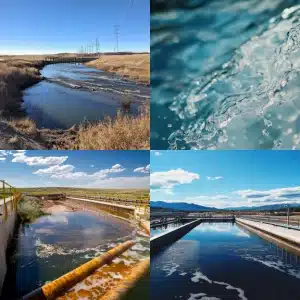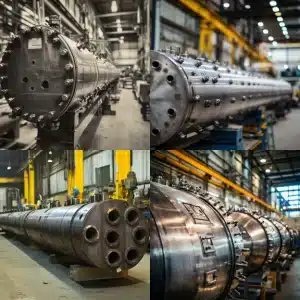
Understanding how to perform pressure vessel failure analysis involves a systematic review of design data, visual inspections, NDT, metallurgical testing, and stress assessments to uncover root causes of failure. By partnering with experts like Red River LLC and implementing rigorous quality control, you can reduce downtime, increase safety, and extend the life of your equipment. This guide walks you through each phase to ensure accurate diagnostics and smarter long-term decisions.
Key Steps in How to Perform Pressure Vessel Failure Analysis
Learning how to perform pressure vessel failure analysis is key to improving safety, reducing downtime, and extending equipment life. This process involves identifying warning signs, checking material integrity, and following industry standards like those from ASME. Experts like Red River LLC stress the importance of quality control and consistent procedures to prevent failures and improve reliability.
How to Perform Pressure Vessel Failure Analysis
Before you get into the specifics, it helps to understand the role of each step. Any breakdown in a pressure vessel can stem from flaws in design, material selection, fabrication practices, or even how the vessel is used day to day. Analyzing each aspect will usually reveal a root cause and help you adapt future designs or operating schedules. If you want more details on the typical pitfalls, you might visit what are common pressure vessel failures.
Let’s walk through the major phases of failure analysis, highlighting what to watch for and how to address potential trouble areas.
Gather Background Information
A failure analysis starts with gathering as much background as possible about the pressure vessel in question. You want to check:
- Design specifications (including maximum operating pressure and temperature).
- Operating and maintenance logs (any unusual fluctuations or maintenance gaps).
- Any modifications that have been made over time (such as adding new instrumentation).
- Environmental factors (humidity, exposure to corrosive agents, or high temperature swings).
Conduct a Visual Inspection
Once you have the background, a systematic visual inspection helps you confirm or reject any early assumptions. Visual clues can include:
- Discoloration or staining around welds.
- Cracks near high-stress areas such as weld joints or nozzles.
- Deformation in sections that should be straight or uniformly curved.
- Rust, pitting, or other corrosion signs on internal or external surfaces.
If you find a consistent discoloration pattern, you might discover that the vessel is exposed to corrosive chemicals in ways the original design did not anticipate. Red River, for example, emphasizes thorough inspection of material surfaces and joints. Its in-house team (specializing in prefabricated solutions) notes that early detection of small cracks in controlled environments can avert major issues later. For deeper discussion of corrosion issues, see corrosion failure analysis.
Perform Non-destructive Testing (NDT)
Next, you can use NDT methods to examine areas that visual checks simply cannot reveal. Common NDT techniques include:
- Ultrasonic testing: Uses high-frequency sound waves to find hidden cracks or thickness variations.
- Radiographic testing: Uses X-rays or gamma rays to see subsurface defects like weld porosities.
- Dye penetrant testing: Brings out surface cracks once a penetrant solution seeps into them.
- Magnetic particle testing: Detects cracks in ferromagnetic materials by observing how iron particles cluster on the surface.
Investigate Material Properties
After you collect NDT data, you want to confirm the metal’s composition, heat treatment history, and mechanical attributes. This is often called metallurgical testing. You analyze the microstructure to see if issues like improper heat treatment led to brittleness or if chemical composition deviates from the vessel’s design requirements.
- Check for metallurgical defects or inclusions.
- Compare the actual yield strength and tensile strength with design values.
- Look for signs of embrittlement under repeated high-temperature service.
If you are curious about deeper metallurgical tests, you can explore metallurgical failure analysis. Detailed lab evaluations help you decide whether subpar materials or heat treatments played a part in the vessel’s failure.
Assess Stresses and Loads
Pressure vessels operate under constant stress. Over time, small cycles of stress can accumulate, leading to fatigue cracks. Inspect your vessel’s history of pressure, temperature changes, and cyclic loads. Tools like finite element analysis (FEA) can simulate how different stresses affect the walls and welds.
- Identify stress concentrations (like sharp corners or abrupt transitions near nozzles).
- Look at cyclical loading frequency (daily start-stop cycles in a plant can add up).
- Investigate any redesign or patchwork that shifted stress paths.
This step can also involve looking at structural aspects in context. A vessel designed for a certain fluid might face unexpected loads if that fluid’s viscosity or density changes. If you want to dig into structural aspects further, you could read about structural failure analysis.
Pinpoint the Root Cause
Once you compile all your findings, NDT results, material checks, stress evaluations—you can piece together the root cause or causes. This is sometimes referred to as the “5 Whys” method, where you keep asking “why?” until you get to an actionable origin.
- Why did a crack form? Possibly repeated thermal cycling.
- Why was there thermal cycling? Maybe an unplanned temperature spike or inadequate insulation.
- Why was insulation lacking? The design specification overlooked certain operating conditions.
Document Findings Clearly
At the end of a thorough failure analysis, you want a clear record of what you found, how you found it, and what you recommend. This final documentation often includes:
- Photos of defects, with close-ups of cross-sections or microstructures.
- Written explanations of which tests were used and why.
- A timeline of events or usage that might have led to the failure.
- Recommendations for redesign, material changes, or improved inspections to prevent future problems.
You may also want to share these findings with your internal teams or collaborate with outside engineering experts. In certain cases, specialized analyses such as mechanical failure analysis or fatigue failure analysis might be necessary.
Red River’s Commitment to Quality
Because you are working with pressurized systems, it is essential to partner with a manufacturer or supplier that knows what they are doing. Red River LLC is an ASME-certified manufacturer that goes beyond standard guidelines (holding U4 and R stamps, among others). By integrating advanced modeling, a rigorous quality control process, and total material traceability, Red River LLC aims to reduce guesswork. Prefabrication in a controlled environment also improves consistency, which in turn cuts down on the risk of on-site errors.
How to Perform Pressure Vessel Failure Analysis
Conducting a thorough pressure vessel failure analysis is not just about stopping a leak. It is about understanding the vessel’s entire lifecycle, from the choice of materials to final installation. You hold the key to safer, more efficient pressurized systems. By following the steps above, plus collaborating with a proven fabricator like Red River, you can keep critical equipment running well and avert costly breakdowns.
Take Action Today for Safer Operations
Ready to strengthen your equipment reliability? Contact Red River LLC today to learn how expert teams can help you perform a detailed pressure vessel failure analysis and build safer, more durable vessels for your operations.
Frequently asked questions
1.What causes pressure vessel failure?
Pressure vessel failure is typically caused by factors such as corrosion, material defects, poor welding, overpressure, fatigue, and inadequate maintenance. These issues weaken the vessel’s structural integrity, potentially leading to leaks, cracks, or catastrophic ruptures.
2. What are common pressure vessel failures?
Common pressure vessel failures include corrosion-induced thinning, fatigue cracking from cyclic stresses, brittle fracture due to low temperatures, weld defects, and failures caused by overpressure or improper material selection.
3. Can I do a failure analysis without professional help?
You can perform initial inspections and gather documentation yourself. However, professional labs and experts bring advanced testing methods (like radiography) and deeper design insights that help confirm internal defects.
4. How often should I conduct a failure analysis?
You do not typically perform a full failure analysis unless you suspect or confirm a problem. However, regular inspections, alignment with ASME guidelines, and periodic non-destructive testing reduce the likelihood of sudden failures.
5. What are the failure analysis of pressure vessels?
Failure analysis of pressure vessels involves identifying the root cause of failure using visual inspections, non-destructive testing (NDT), metallurgical analysis, and stress evaluations. These methods help detect cracks, material defects, corrosion, or design flaws.
Key takeaway
- Regularly inspect and document your pressure vessel’s condition so you can spot early defects.
- Use comprehensive methods (visual checks, NDT, and metallurgy) to get a complete picture of potential failure.
- Focus on root causes, not just symptoms, when analyzing any vessel-related issues.
- Partner with experienced manufacturers like Red River, who hold ASME certifications, to ensure top-notch fabrication.
- Maintain strict quality control and consistent processes to extend the vessel’s operational life and reduce downtime.




